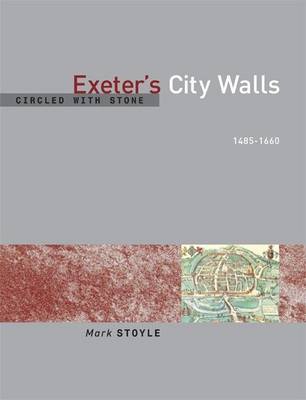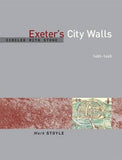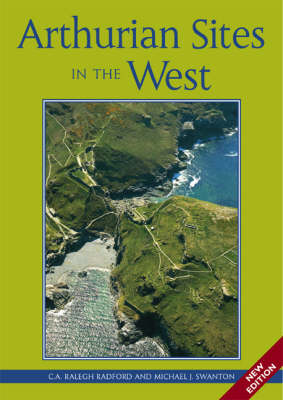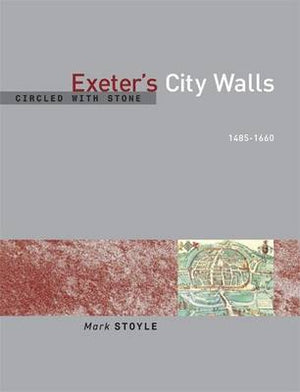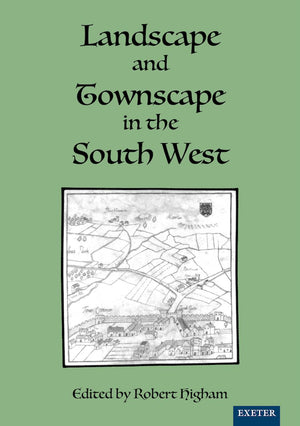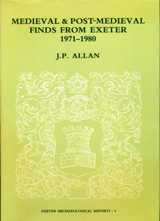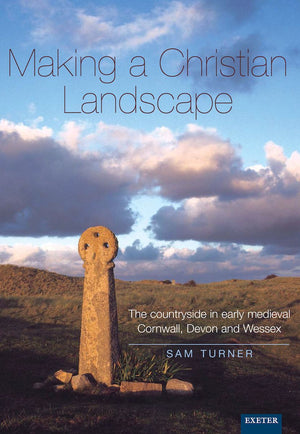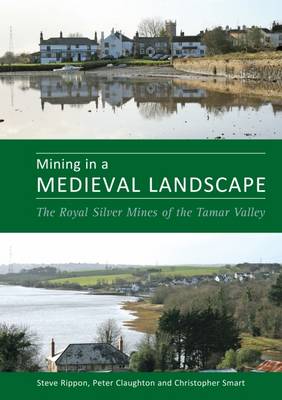University of Exeter Press
Circled With Stone
Exeter's City Walls, 1485-1660
Couldn't load pickup availability
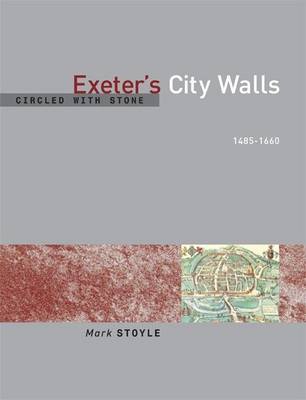
- 280 Pages
Winner of the Devon Book of the Year Award 2003, Circled with Stone is the most comprehensive study to date of the fortifications of an early modern English city. The culmination of some twenty years of archaeological and documentary research, it provides a richly detailed portrait of the ancient system of walls, towers and gates which ringed the city of Exeter during the Tudor and early Stuart periods. The book traces the development of the fortifications over time, explores the many purposes which they served, and shows how they were defended against a series of major attacks: most notably during the Prayer Book rebellion of 1549 and the English Civil War.
The text is accompanied by a series of extensive transcripts from Exeter's matchless civic archives, including two newly-discovered documents relating to the Prayer Book rebellion. The book includes a wealth of illustrations and brings together, for the very first time, colour reproductions of all the early maps of Exeter, as well as a series of specially commissioned photographs of the city walls today. Designed to be accessible to the general reader, as well as to the specialist, Circled with Stone paints a uniquely vivid picture of the role which urban fortifications played in everyday life in one of early modern England's greatest cities.
Richly detailed, fully illustrated and accessible to the general reader as well as of interest to historians and archaeologists.
This is the most comprehensive study to date of the fortifications of an early modern English city. The culmination of some twenty years of archaeological and documentary research, it provides a richly detailed portrait of the ancient system of walls, towers and gates which ringed the city of Exeter during the Tudor and early Stuart periods.
'The general subject needs detailed local studies of this sort to illuminate the wider picture and stimulate the posing of useful questions elsewhere. Early modern urban, military and social history will all benefit.' (Robert Higham, Senior Lecturer in Archaeology, University of Exeter)
'It will provide the most comprehensive study to date of the fortifications of an early modern English city. Its inclusion of transcripts of the very valuable information found in the city Receiver's Accounts, as well as some useful subsidiary documents, will be especially welcome. Such documentary detail is not available elsewhere, so both historians and military enthusiasts will benefit from being able to peruse transcripts of the original records.' (Maryanne Kowaleski, Professor of History, Fordham University, New York)
'…the book’s significance lies in revealing how the medieval concept of the walled city remained active in the minds of 16th and 17th century Exonians as a symbol both of defence, civic pride and prestige.' (Andrew Saunders, Casemate, Jan 2004)
‘Mark Stoyle’s important volume, in presenting the first detailed account of the defences of an early modern English city (and indeed one of the most significant document-based studies of the defences of any British town) succeeds in overturning many………preconceptions’.
‘A valuable scene-setting description of Exeter’s defensive topography emphasises that the city’s fortifications comprised far more than the wall and gates, but a multi-layered defensive belt stretching from an intra-mural route to the outer lip of the city ditch’ (Oliver Creighton, Sixteenth Century Journal)
‘…town defences have been something of the poor relations to castles. Mark Stoyle’s superb new book emphatically demonstrates that this need no longer be the case. Presenting a detailed yet lively social and military history of Exeter’s city walls in the Tudor and Early Stuart periods, Circled with Stone can be regarded as a major case study that will have a profound impact on our understanding of urban defences far beyond the city which it immediately deals.’ (Post Medieval Archaeology, Vol 38.2 for 2004)
‘The book is beautifully produced, with some superb colour plates of early modern maps of the city, and the main chapters are preceded by an immensely useful ‘tour’ of the walls. These qualities mean that it is attractive to many types of reader.’ (Post Medieval Archaeology, Vol 38.2 for 2004)
‘This attractively produced volume… The volume is both a labour of love by a citizen of Exeter who has become one of the most distinguished historians of the south west, and an act of homage to a friendship which crossed interdisciplinary lines. It is the fruit of historical scholarship and archaeological engagement.’ (Journal of Regional and Local Studies, 22.2: Spring 2003)
'Among the plates are an exceptional series of maps, reproduced in colour, which testify to the importance of the walls and to the pride which the leaders of the community retained in them.’ (Journal of Regional and Local Studies, 22.2: Spring 2003)
‘This volume does more than the modest claims of its author and publisher set out. They are to be congratulated on producing an important and attractive volume.’ (Journal of Regional and Local Studies, 22.2: Spring 2003)
‘This handsomely produced book comprises two major sections, a history of the city walls and a series of original documents … The book is beautifully and informatively illustrated … This is a social history of the walls which refracts the history of the community encircled by them.’ (History, Volume 90 Issue 1 Number 297 January 2005)
List of Illustrations
Preface
Acknowledgements
Part I: The History of the City Walls
Introduction
1. The Nature of the City Defences
2. Purpose and Function
3. Maintainance and Repair
4. The City Defences under the Tudors
5. The City Defences under the Early Stuarts
Conclusion
Suggested Further Reading
Part II: Documents Relating to the City Walls
Introduction
The Exeter Receivers and their Accounts
Editorial Conventions
1. Extracts from the City Receivers' Accounts, 1482-1660
2. Expenses in Repelling Perkin Warbeck, 1497
3. Extracts from the Chamber Act Books, 1511-1545
4. Purchase of Ordnance for the City, 1545
5. Expenses in the 'Commotion', 1549
6. List of the City Ordnance, 1556
7. Instructions for the Defence of the City, 1643
8. List of the City Ordnance, 1643, Annual Expenditure on the City Defences, 1485-1660
Glossary of Terms used in the Documents
Abbreviations
Notes
Indexes
Places and Subjects
Persons
- 280 Pages







